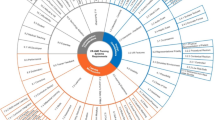Abstract
Collisions and groundings continue to take their toll on seafarers and the environment. Much has been said about the associated role of human factors. STCW95 endeavored to create a closer relationship between what is taught and what is needed to handle the demands of the operational environment. Technological developments such as ARPA, and in the future AIS, imply access to more data. With a view to determining how data should be presented and used, this study examines the capabilities of mariners to identify and initiate an appropriate course of action in an encounter where the need for two targets to maneuver to avoid collision with each other changes our own vessel’s passing distance from a safe to an unsafe state. Such a capability can generally add to the probability of a successful encounter through anticipating the resulting conflict with our own vessel and through taking appropriate early action. The outcome of this study, reported in this paper, was that very few senior officers and masters displayed the advanced level of anticipation skills that would provide the situation awareness needed for the encounter presented. Such outcomes may point to the need for inclusion of specific training in anticipation skills within the maritime educational system and/or for the provision of decision support systems which assist the development of situation awareness and identification of an appropriate course of action.
Similar content being viewed by others
References
Rasmussen, J. et al.:New Technology and Human Error. New York: John Wiley & Sons., 1987, p. 348.
CBSSE:Performance Assessment for the Workplace. Washington: National Academy Press, 1991. Vol.1,p59.
Singh, S.:Assessment of performance on bridge simulator exercises. In:Proceedings of the 11th. International Simulator Lecturers’ Conference. International Maritime Lecturers’ Association (IMLA), 2000, pp. 86–93
Woods, D.:Tasks, Errors and Mental Models. London: Taylor and Francis, 1988. pp 129–148.
ibid..
Orasanu, J., Martin, L.:Errors in decision making: A factor in accidents and incidents. InProceedings: HESSD, 1998, p.101.
Gerhardt, D. et al.:Analysis of decision making in maritime collision avoidance manoeuvres. In:Proceedings: Fourth International Symposium on Marine Traffic Service. Bremen, 1981, p. 90.
Das Seeamt: Judgement MAKARSKA – SYDNEY EXPRESS Collision. Report of the German Court of Inquiry 1979 — German Text.
Klerk, J., Singh, S.: Effective exercises. In:Proceedings: 4 th International Radar and Navigation Simulator Lecturers’ Conference. Mariehamn: International Maritime Lecturers’ Association (IMLA), 1986.
Singh, S.:Sector displays for traffic monitoringand assessment. InProceedings: Symposium on Vessel Traffic Service. Bremen: Hochschule für Nautik, 1981, p. 167.
NAE:Industrial Environmental Performance Metrics: Challenges and Opportunities. Washington: The National Academy Press, 1999, p. 19.
Rights and permissions
About this article
Cite this article
Singh, S.J. Mariner anticipation and performance. WMU J Marit Affairs 2, 33–48 (2003). https://doi.org/10.1007/BF03195032
Issue Date:
DOI: https://doi.org/10.1007/BF03195032




